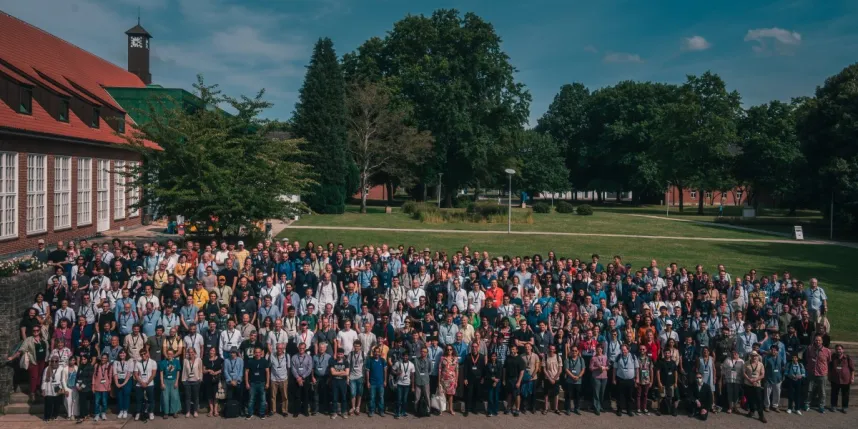“Dynamic Days Europe” brings interdisciplinary dialogue forum to Bremen-Nord
From Number Theory to Climate Change: over the course of five days, 518 participants of the prestigious Dynamic Days Europe conference gathered on the campus of Constructor University in Bremen to discuss topics related to pure and applied dynamical systems. The event constituted the 44th annual installment of the conference, which for the first time took place in Bremen. The program included plenary lectures by leading scientists as well as numerous parallel sessions and mini-symposia.
Under the umbrella of dynamical systems, the eleven plenary lectures covered central topics of the conference, ranging from neuroscience, climate science, quantum physics and turbulence to the mathematics of partial differential equations and number theory. On the mathematical side, the plenary speakers included Professor Martin Hairer, who received the 2014 Fields medal, the highest honor in mathematics considered equivalent to a Nobel prize. His plenary lecture “Top Lyapunov exponent for advection-diffusion” discussed mathematical aspects of measuring the complexity of particle motion in a fluid that is driven by random effects. Another highlight was the presence of several Constructor University Alumni, in particular Professor Vlad Vicol, who gave a plenary lecture titled “On anomalous diffusion”, and Professor Christian Kühn, who organized one of the mini-symposia and gave a session talk.
In his public lecture, “Life in a warming world”, Professor Thomas Jung from the Alfred-Wegener-Institute discussed the impact of climate change at the local level. Using data of jet stream movements combined with current climate models, he illustrated how calculations can be made for weather outcomes in a world affected by climate change – or, conversely, to show what today’s weather would look like in a world of pre-industrial climate conditions. He stressed the importance of deepening the understanding of different possible scenarios – in order to prepare for the challenges, but also to instigate positive change on a societal and political level: “Yes, there is inevitable warming with inevitable bad consequences. But in my view, it is also important to show possible positive narratives.”
About half of the participants at Dynamics Days Europe were doctoral students or young postdoctoral researchers. “This opportunity to travel internationally during my PhD is one of few, and therefore is very important to my ability to collaborate with international researchers and see what the cutting edge in the field is within dynamical systems,” said Ramón Nartallo-Kaluarachchi, doctoral student at the Mathematical Institute of the University of Oxford. Nartallo-Kaluarachchi works on modelling and analyzing brain network dynamics. He was one of altogether 21 young scientists whose visit to Bremen was supported by the Wilhelm and Else Heraeus Foundation.
Additional funding for the 2024 Dynamic Days Europe was made available by the Deutsche Forschungsgemeinschaft (DFG), the Wolfgang Ritter Stiftung, and the Springer publishing house. Poster awards were sponsored by American Institute of Physics (AIP) Publishing, as well as Cambridge University Press.
For more information, please visit the event website: Dynamic Days Europe 2024.
Questions answered by:
Sören Petrat | Associate Professor of Mathematics
spetrat@constructor.university | Tel.: +49 421 200 3211
